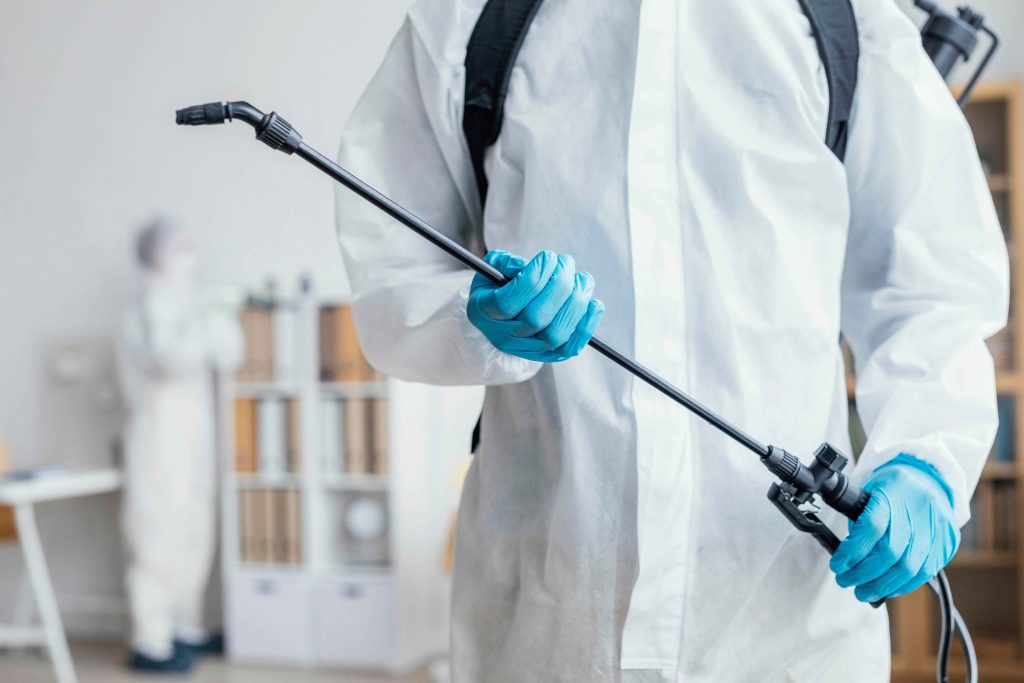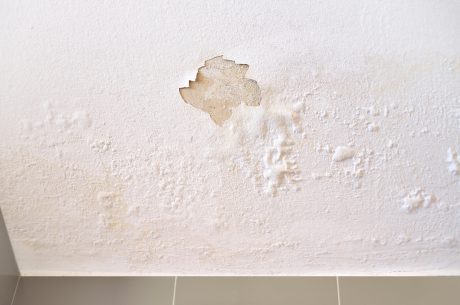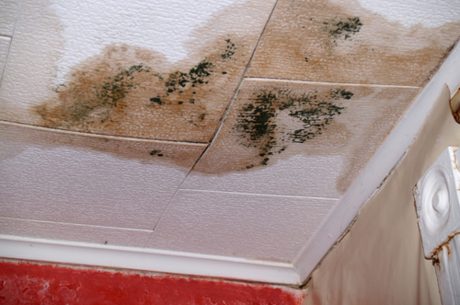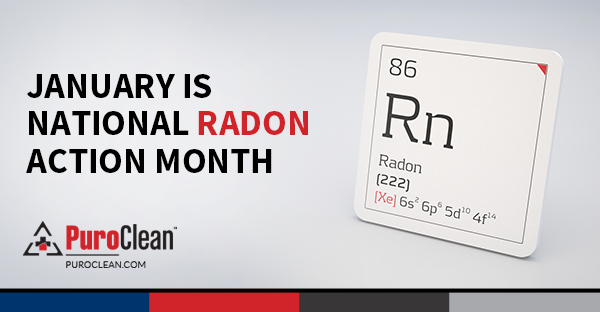Mold poses a serious problem in homes and businesses, leading to health issues and costly repairs. While many homeowners try to tackle mold problems on their own with a mold test kit, professional mold testing is the only way to ensure accurate results and identify all potential causes of mold growth.
In this article, we’ll discuss the differences between professional mold testing and test kits so you can make an informed decision which option is right for your needs. By understanding the advantages and drawbacks of each approach, you will be better equipped to decide whether professional mold testing or a DIY solution fits best with your goals.
Take proactive steps today and reach out to a trusted restoration partner to help restore your property and ensure a healthier living or working environment.
What Is Mold Testing?
Mold testing is an analytical process used to identify the presence and types of mold in a given indoor environment. It involves collecting samples from affected areas, analyzing them for type and concentration, then interpreting the results. The purpose of mold testing is to detect hidden moisture problems that can lead to health issues or structural damage.
The most common mold testing methods are air sampling and surface sampling, although bulk sampling may also be necessary. Air sampling involves taking samples of air particles using specialized equipment such as air pumps or samplers attached to a vacuum device. Surface sampling involves direct contact with surfaces affected by visible growth or staining; this method requires careful handling since some molds produce toxins that can cause skin irritation or airborne particulates upon disturbance.
Bulk sampling entails removing material from walls, ceilings, floors, etc.; it should only be done after non-invasive techniques have been unsuccessful in confirming the presence of elevated levels of airborne fungi spores. Interpreting test results requires knowledge and experience: experienced professionals understand what constitutes “normal” levels versus hazardous levels, as well as how different species respond differently to each other when present together.
They use their expertise to make sure you get accurate information on which to base your decisions about mold removal procedures and preventive measures for future mold problem avoidance.
Advantages And Disadvantages Of Professional Testing
Now that we’ve established what mold testing is, let’s discuss the advantages and disadvantages of professional mold testing. Professional mold testing by a certified inspector can provide more comprehensive results than do-it-yourself kits. These tests can identify problem areas in your home or business which may have been overlooked using DIY methods.
The primary advantage to professional mold testing is accuracy. A certified technician has the experience and knowledge to detect potential problems with greater precision than a test kit could. They also use specialized tools to properly collect samples for analysis without contamination. This means you get reliable results quickly and efficiently, allowing you to save time and money in the long run.
But there are some drawbacks to professional mold testing too, most notably its cost. It can be rather expensive compared to the relatively cheap cost of a DIY kit, depending where your location and the type of examination required. If you do decide that this course of action is best for you, however, be sure to work with a qualified inspector who is familiar with how to handle any problem involving mold development or eradication in your residence or place of business.
In terms of evaluating whether or not professional mold testing is worth it for your particular property, consider all factors before making a decision. The ideal option for your needs and budget will depend on how well you understand both the benefits and disadvantages of each one. Take into account the possible health hazards posed by mold as well as the potential negative effects on your property’s worth.
Pros And Cons Of A Do-It-Yourself Mold Test Kit
DIY mold testing kits have become increasingly popular due to their availability and affordability. While they may seem like a great option, there are both benefits and disadvantages associated with these tests. Here’s a closer look:
Benefits of DIY Mold Testing
- Quick & easy: A DIY mold test kit offer convenience – you can quickly identify whether or not your home has elevated levels of airborne mold spores without having to bring in an outside professional.
- Affordable: Most do-it-yourself kits cost much less than hiring a certified inspector for an official inspection.
- Accessible: These types of tests are widely available online as well as in many hardware stores, so it’s easy to get the materials you need for testing.
Risks of DIY Mold Testing
- Inaccurate results: Without specialized experience and training, it can be difficult to interpret the results from a DIY kit accurately – even if the kit itself is reliable. This could lead to false positives or negatives that don’t give you an accurate picture of your home’s air quality.
- Limited scope: Most do-it-yourself kits only measure airborne mold spores, which means they won’t detect any potential water damage or hidden growth behind walls and ceilings.
- Unreliable advice: Even if your test comes back positive, many DIY kits lack detailed instructions on how best to remediate the issue, leaving homeowners unsure of what steps they should take next.
While do-it-yourself mold testing offers some advantages in terms of convenience and cost savings, its drawbacks mean that it isn’t always the most reliable way to evaluate your home’s indoor air quality. From here we’ll move on to discussing the financial considerations involved when selecting between professional testing and DIY options.
Cost Considerations

It is important to consider the cost when determining which type of mold testing is best for you. A comparison of professional mold testing and DIY kits can help determine which option makes more sense financially. When looking at the cost, there are two main factors to examine: professional testing costs versus DIY kit costs.
The cost associated with a professional mold test varies depending on what type of inspection or assessment will be conducted as well as how much area needs to be tested. Generally speaking, however, the range can go from $200-$800 per hour or more depending on region and complexity of job. This price may also include additional fees such as travel expenses if applicable.
A DIY mold test kit typically come in packages that range from about $50 – $100 for each room or space being tested. These tests usually contain multiple items such as air sample collection media, tape samples, swabs and instructions for use. The results take time to process; so it often takes several days before any information becomes available.
Many people choose a professional service over using a DIY kit because they want quicker results they can trust. When comparing cost options between these two choices it’s clear that both have their advantages and disadvantages but ultimately the decision depends upon personal preference and budget constraints. Understanding all factors involved helps make an informed decision on which option works best for your particular situation.
It is important then to analyze not only the pros and cons of professional vs DIY testing but also to weigh up any additional factors that could affect the overall outcome of your examination such as specific environmental conditions within your home or office building.
Important Factors To Consider
There are two primary options available for a successful mold testing: professional mold testing or do-it-yourself mold test kits. Which is best for you, as each has benefits and disadvantages? Let’s look at some of the key factors to consider while deciding which strategy to use.
| Professional Mold Testing | DIY Test Kits |
| More Accurate Results | Less Costly |
| Provides Action Plan | Quick Results |
| Identifies Humidity Levels | Limited Tests Available |
The accuracy of results from professional mold testing far surpasses that of DIY test kits. This method provides more comprehensive information regarding the presence of potentially dangerous molds in your home or business. The data collected during professional inspection can also be used to develop an action plan on how best to address any issues found.
Professionals are able to identify humidity levels that could lead to future mold growth and provide recommendations on ways to prevent this. DIY test kits are often less costly than hiring a professional inspector but they typically only offer limited tests and may not detect all forms of hazardous molds present in your environment. While they provide quick results, these results may be inconclusive due to user error or other factors such as air quality or safety concerns related to sampling areas.
It is essential to weigh the risks associated with potential health hazards posed by mold infestations against environmental impact and cost before deciding which type of assessment would work best for your particular situation. If you need accurate results and want peace of mind knowing that all possible hazards have been addressed, then investing in professional mold testing services will likely be worth every penny spent.
Conclusion
Which is better for you—professional mold testing or home test kits? That actually depends on the circumstances. It’s best to spend money on expert mold testing services if you think your house or place of business has a serious mold issue. Professionals are equipped with the skills, information, and tools needed to accurately assess the scope of the mold issue and make the best repair suggestions.
A DIY mold test kit may be an excellent choice if you’re searching for a quick and affordable approach to check for mold. Bear in mind, nevertheless, that these test kits could not always be dependable and might not give a precise assessment of the mold issue.
Regardless of the course you take, mold development must be treated properly and quickly if you want to avoid further property damage and significant health risks for you, your family, or your staff.
If you live in Pembroke Pines and require expert mold testing or mold remediation services, think about calling PuroClean of Pembroke Pines. To guarantee that your house is secure and healthy, our team of qualified experts can offer thorough mold testing and removal services. Don’t wait another minute to take action and call PuroClean of Pembroke Pines at (754) 732-8383 to arrange a consultation. You can also contact us.
PuroClean of Pembroke Pines is your trusted partner for emergency restoration services in the Pembroke Pines, Davie, Hollywood, Dania Beach, Cooper City, Fort Lauderdale Airport, Pembroke Lakes Mall, Hard Rock Hotel, Fort Lauderdale, and Miami areas. Our dedicated team is ready to respond swiftly to any disaster, offering professional restoration services with a focus on quality and efficiency. Whether you’re dealing with water damage, fire damage, mold issues, or any other emergency, our experts are equipped to handle the restoration process promptly. At PuroClean, we understand the importance of a quick and effective response to minimize damage and restore your property to its pre-loss condition. Trust us for reliable and localized emergency restoration services in the South Florida region.
When facing restoration challenges, don’t hesitate to call PuroClean of Pembroke Pines at (754) 732-8383 Our team of skilled professionals is ready to guide you through every step, ensuring a seamless and successful restoration process. If you have questions or need immediate assistance, engage with our online assistant – a convenient and quick way to get the information you seek. Stay informed about the latest insights and tips in the realm of restoration by leaving your contact information in our contact form. We’ll notify you promptly when we publish our next article on the topic, empowering you with the knowledge you need for a successful restoration experience. Take the first step towards a renewed and revitalized space today!




 PuroClean of Ft. Lauderdale South
PuroClean of Ft. Lauderdale South